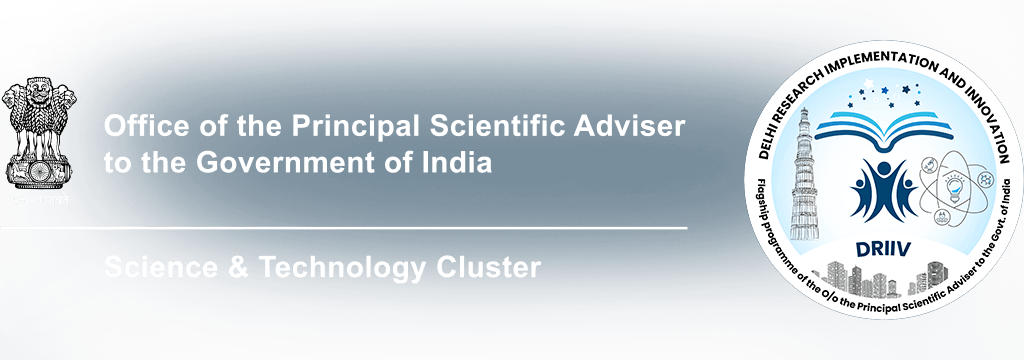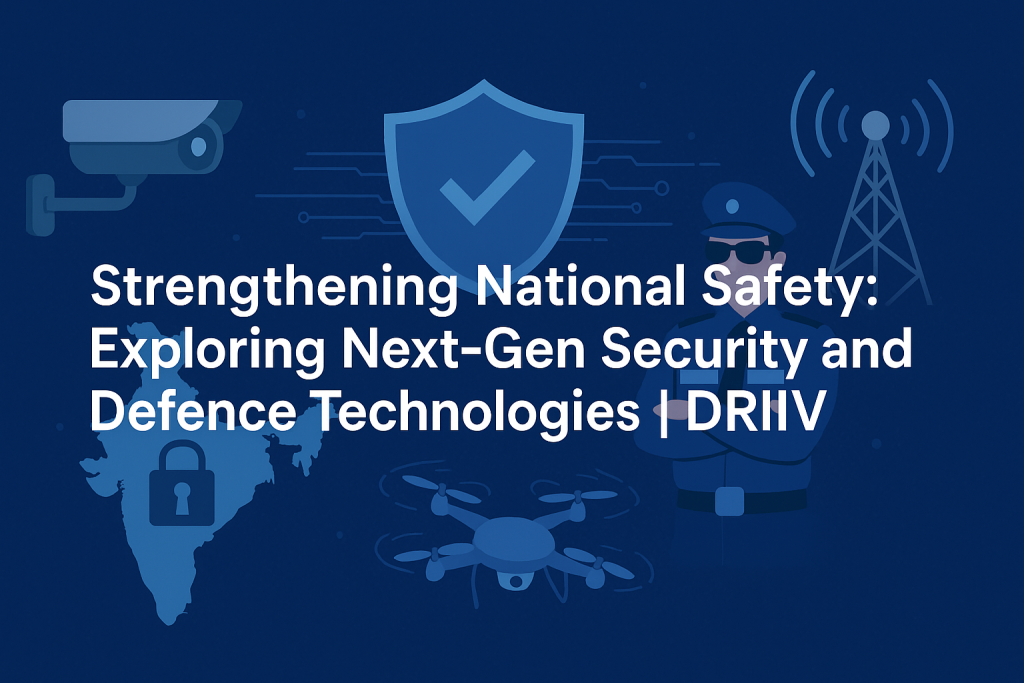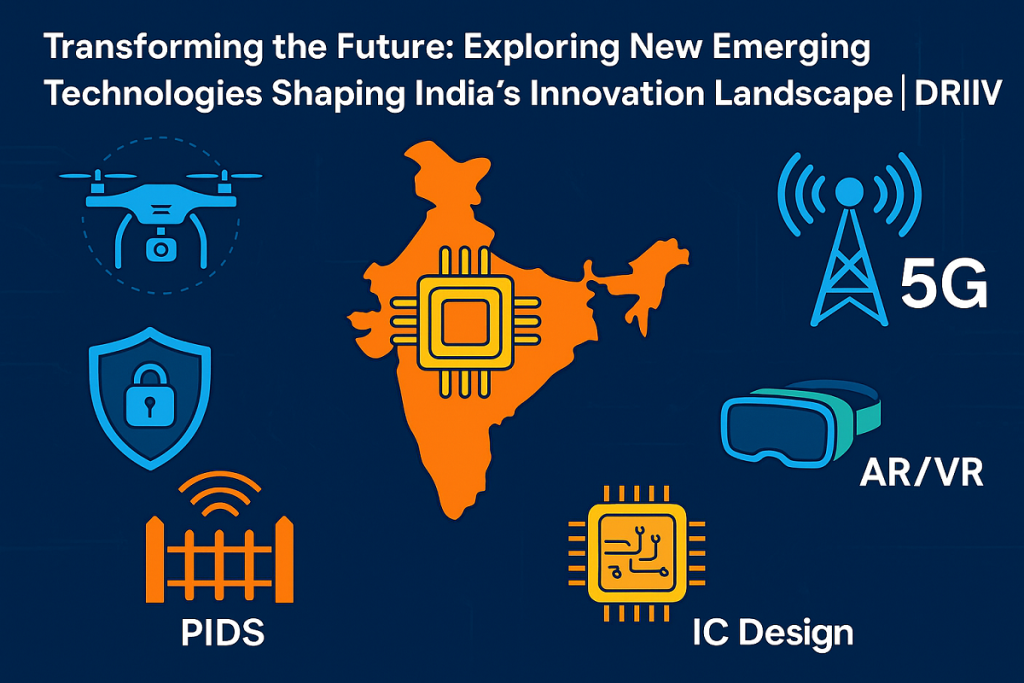In today’s fast-changing world, national security challenges are growing more complex. From border intrusions and drone threats to communication breakdowns in emergencies, traditional systems often fall short. This is where Next-gen security, Critical communication, Perimeter defence, and Antidrone technologies come into the picture.
At DRIIV (Delhi Research Implementation and Innovation), we are working closely with innovators, startups, and research institutions to develop cutting-edge technologies that improve national safety. Our goal is to build strong, smart, and secure systems that help India stay ahead of modern security threats.
What Is Next-Gen Security?
Next-gen security refers to the use of modern, intelligent, and technology-driven tools and systems to protect people, borders, and infrastructure. These systems combine artificial intelligence (AI), sensors, real-time data, and automation to detect and prevent threats before they become harmful.
Some examples of next-gen security include:
- AI-powered surveillance systems.
- Real-time intrusion detection tools.
- Smart alert and emergency response systems.
- Data-driven crime prediction tools.
Next-gen security doesn’t just protect — it predicts, alerts, and responds faster and better than traditional systems.
Critical Communication: Keeping Lines Open in Emergency Situations
Critical communication is essential during natural disasters, national emergencies, and security operations. It ensures that communication between control centers, field officers, and emergency teams never breaks, even in the worst-case scenario.
At DRIIV, we support the development of:
- Mission-critical communication networks.
- Secure and encrypted radio and satellite systems.
- Smart command-and-control centers.
- Internet-independent communication systems for rural and disaster-prone areas.
Strong and critical communication ensures coordinated action and saves lives in times of crisis.
Perimeter Defence: The First Line of Protection
Perimeter defence refers to security systems placed at the boundaries of a protected area, like airports, military bases, borders, power plants, and critical infrastructure. It is the first line of defence against unauthorized access, intrusions, and attacks.
Technologies used in perimeter defence include:
- Motion detectors.
- Smart fencing with sensors.
- Thermal cameras for night vision.
- AI-based facial recognition.
- Integration with central monitoring systems.
By combining these with real-time alerts and data analytics, perimeter defence systems become smarter, faster, and more accurate.
Antidrone Technologies: Fighting Invisible Air Threats
Drones are widely used for delivery, photography, and surveillance. But in the wrong hands, drones can be used for spying, smuggling, or even attacks. That’s why Antidrone technology is now a vital part of national security.
At DRIIV, we help support the development of:
- Drone detection radar systems.
- Jamming and disabling technologies.
- Automated drone interception tools.
- Drone tracking and identification solutions.
With advanced antidrone systems, security forces can detect and neutralize suspicious drones before they cause harm.
How DRIIV Supports Innovation in Security Technology
DRIIV, a Government of India initiative, is committed to promoting Next-gen security, Critical communication, Perimeter defence, and Antidrone solutions through:
1. Research Collaboration
We bring together top researchers, startups, academic institutions, and public agencies to co-create high-impact security solutions.
2. Pilot Testing
We support pilot projects that test new technologies in real environments — from smart fencing along borders to antidrone systems near airports.
3. Innovation Funding
We help startups and tech innovators with funding, mentorship, and access to testing infrastructure to bring their security ideas to life.
4. Public Sector Engagement
We connect innovators with government agencies for deployment of proven technologies in defence, law enforcement, and disaster management.
Real Use Cases of Next-Gen Security in Action
1. Border Surveillance Systems
Using AI-powered thermal cameras, radar, and drone monitoring, critical border points are being monitored 24/7 for any illegal movements or threats.
2. Antidrone Deployment at Airports
With increasing drone activity near airports, our partner solutions have helped detect, identify, and disable drones to prevent collisions and sabotage.
3. Critical Communication in Disasters
During floods and earthquakes, traditional networks often fail. Our supported technologies ensure emergency services stay connected through satellite and radio links.
4. Smart Fencing at Defence Sites
Smart perimeter systems with motion sensors and alert mechanisms are now helping defence agencies prevent unauthorized access.
Why India Needs Next-Gen Security Now
India faces growing internal and external security threats. From cross-border terrorism to cyberattacks, our traditional security systems need a serious upgrade.
Next-gen security supported by critical communication, perimeter defence, and antidrone technologies is essential for:
- Border safety
- Infrastructure protection
- Crowd management
- Emergency response
- National cyber defence
This is not just a security upgrade — it’s a complete digital transformation of our safety systems.
How DRIIV Is Driving the Change
At DRIIV, we don’t just support innovation — we implement it. Through a robust ecosystem of government bodies, research labs, and startups, we are shaping India’s security future with:
- Cutting-edge drone jamming solutions
- Perimeter security for smart cities
- AI-powered threat recognition tools
- Emergency communication systems in rural areas
- Together, these make up India’s shift to next-gen security.
FAQs: Your Questions Answered
Q1: What is next-gen security?
Next-gen security uses advanced technology like AI, IoT, and real-time analytics to detect, prevent, and respond to security threats more efficiently than traditional methods.
Q2: How does critical communication help during emergencies?
Critical communication ensures uninterrupted, secure, and fast communication during disasters, military operations, or other crisis events, even when regular networks fail.
Q3: What technologies are used in perimeter defence?
Perimeter defence includes smart fencing, motion sensors, thermal cameras, AI surveillance, and alert systems to secure borders and sensitive areas.
Q4: Why are antidrone systems important?
Antidrone technologies help detect and disable unauthorized or malicious drones that can be used for spying, smuggling, or attacks, especially near critical sites.
Q5: How is DRIIV helping in the field of security technology?
DRIIV supports innovation by funding research, helping startups, facilitating pilot projects, and working with public agencies to implement advanced security systems.
Conclusion: Securing the Future with Smart Innovation
India’s national security is no longer just about manpower and weapons. It’s about intelligent systems, connected tools, and rapid response mechanisms. From next-gen security to critical communication, from perimeter defence to antidrone systems — the future of safety lies in innovation.
DRIIV is proud to be a driving force behind this transformation. By bringing science, startups, and state agencies together, we are helping build a safer, smarter, and stronger India.
Explore more at DRIIV and join our mission to secure India through innovation.




